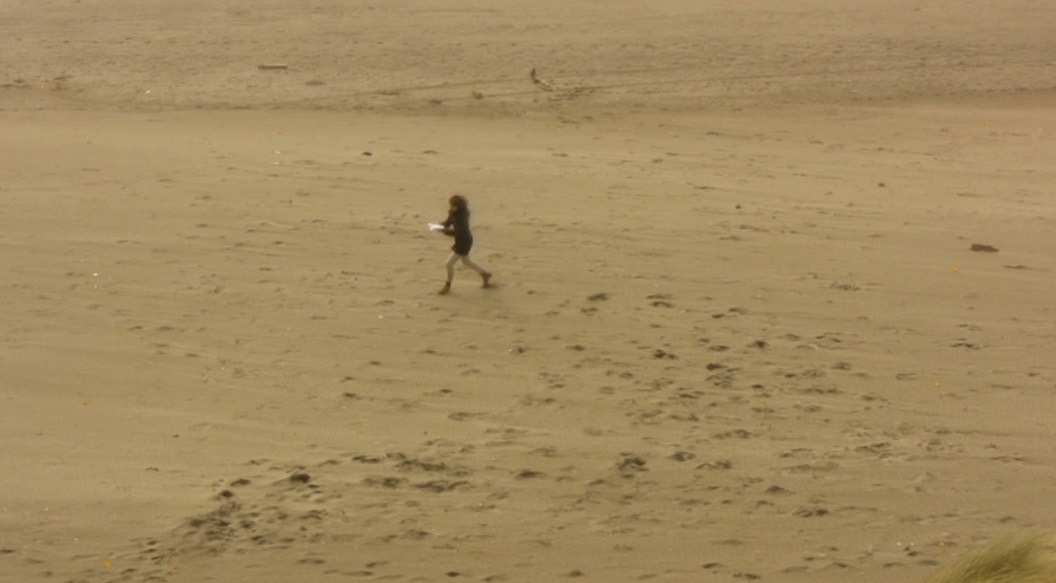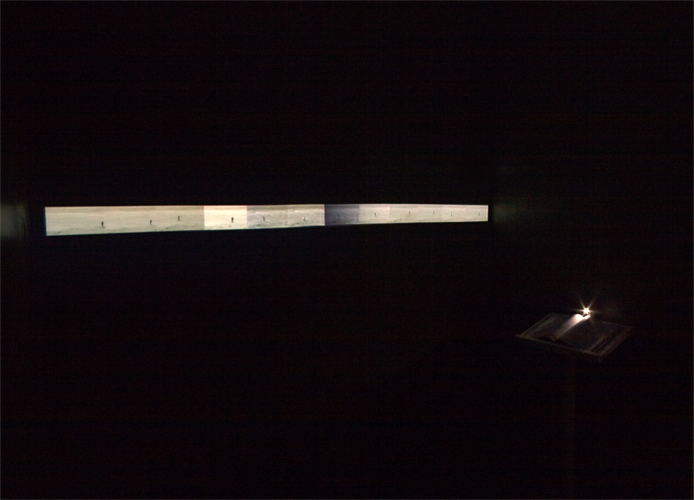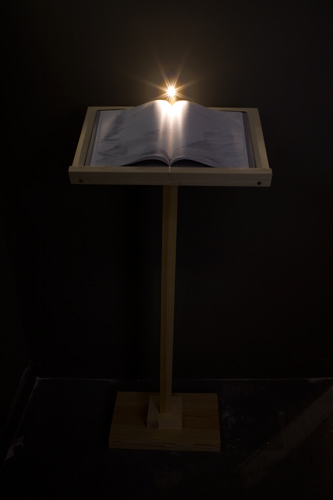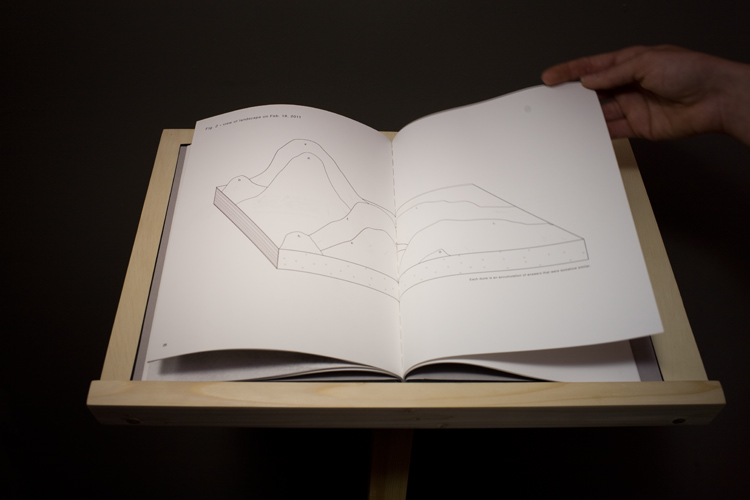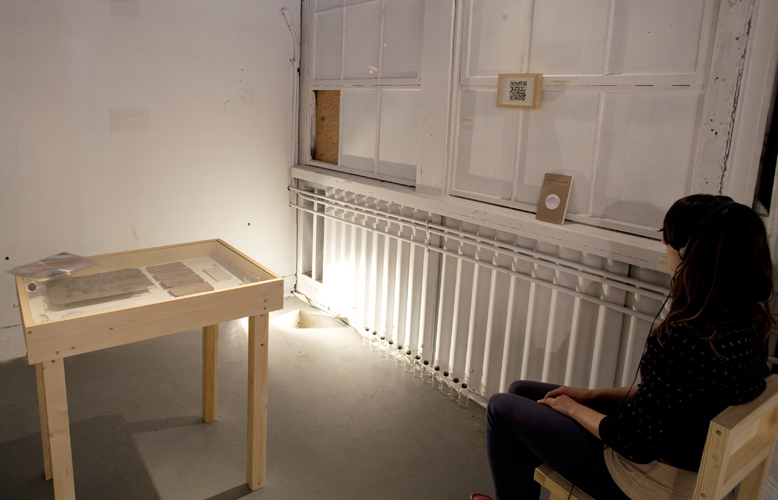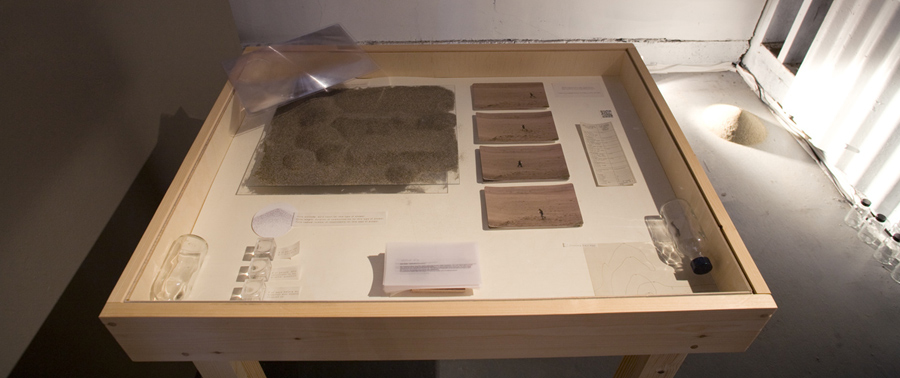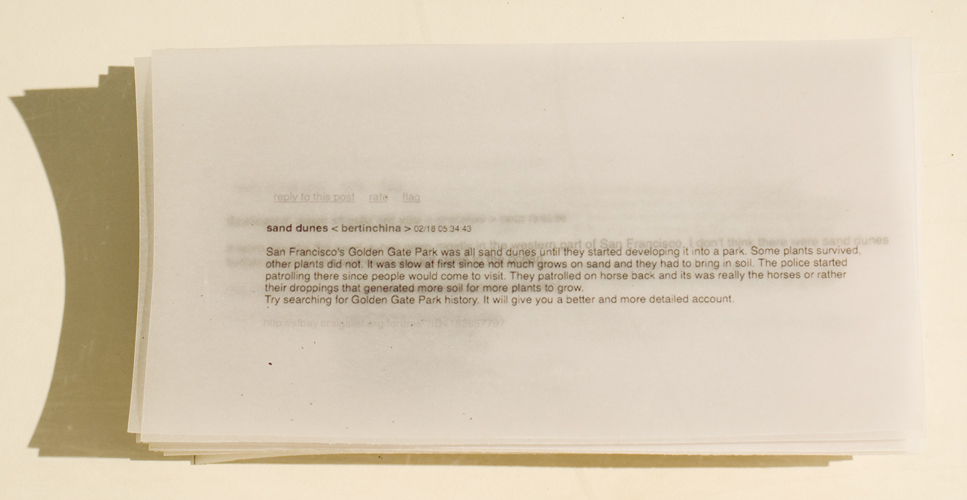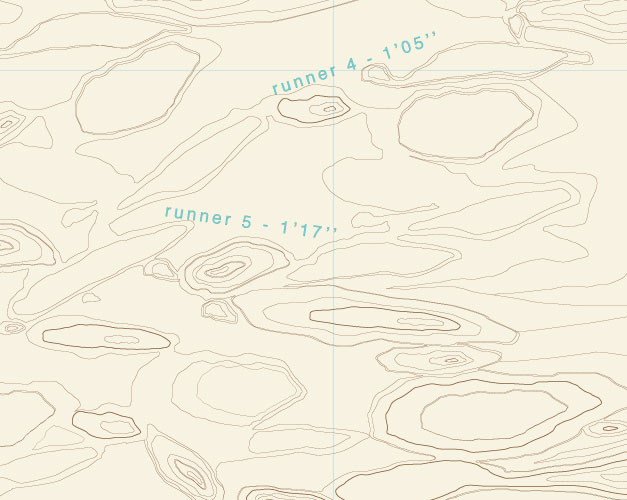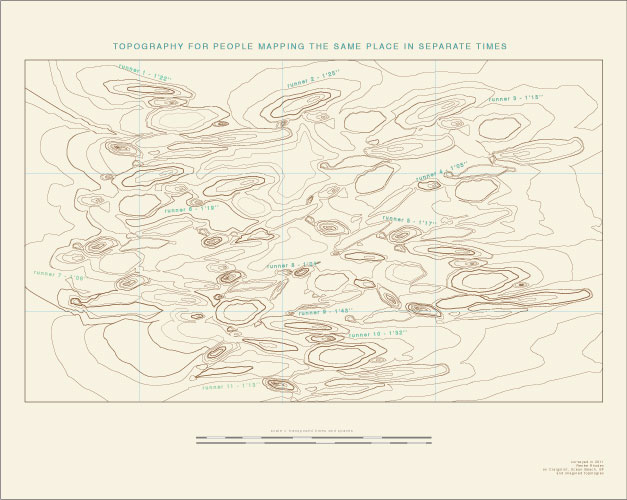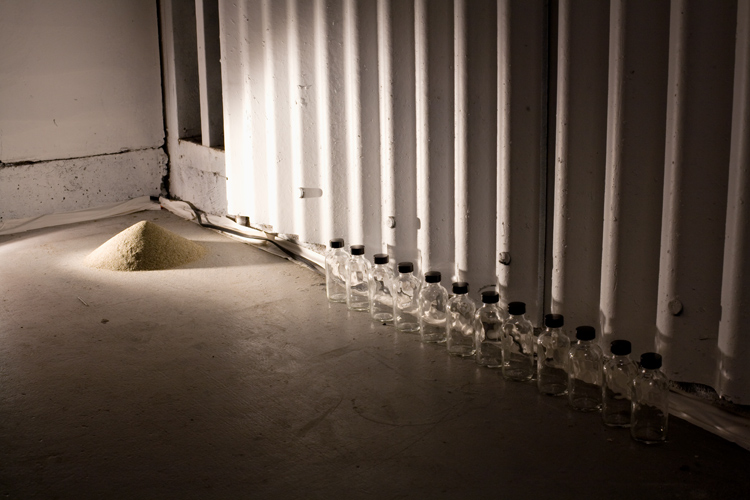Maps for Moving Landscapes
//////////////////////
There are translations – one after another and the body remembers something, in some way. After turning dunes to grids, and a memory to data, and data to dances to data to dances – – what is left of collective memory, of the people and a place they knew, what stories do the topographies of data-memory leave us with?
+++
As my own sense of place shifts into a virtual abstraction, I am curious about the histories of places and how these histories can be remembered through physical means. I started with a question: “What happened to the sand dunes that used to cover the entirety of San Francisco?” I asked this question to people on Craigslist, then collected and graphed every response in a book called A Question Quickly Covered; An Exploration of the Landscapes that Form When People Answer the Same Question From Separate Places. [i]
In an accompanying video twelve separate people are given a map to this subjectively re-imagined landscape. Each figure runs a translation of the map into the sand at Ocean Beach in San Francisco – where the last of these dunes remain. On yet another day these patterns were turned into a set of choreographic variations for 1 dancer that drifted through an exhibition space, using the topological range of her body to translate the topography of memory yet again.
Read more about Maps for Moving Landscapes here in Media Fields Journal.
